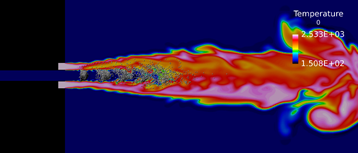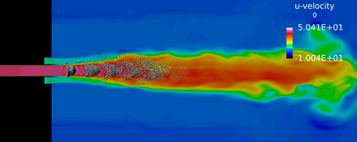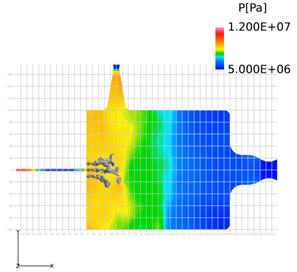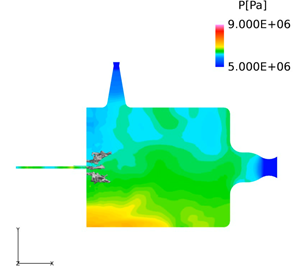Internal flow, combustion and rotating machinery
JAXA Supercomputer System Annual Report April 2016-March 2017
Report Number: R16E0081
- Responsible Representative: Eiji Shima(Research Unit III Research and Development Directorate)
- Contact Information: Taro Shimizu(shimizu.taro@jaxa.jp)
- Members: Hiroaki Amakawa, Tomoyuki Deura, Takayuki Ito, Ryoji Takaki, Seiji Tsutsumi, Hiroyuki Ito, Taro Shimizu, Junya Aono, Takanori Haga, Yuhi Morii, Masaharu Abe, Masayuki Kakehi, Mikiroh Motoe, Manabu Hisida, Hiroshi Koizumi, Hideyo Negishi, Yoichi Ohnishi, Miki Nishimoto, Yu Daimon, Hiroshi Ishihara, Ashvin Hosangadi, Jeremy Shipman, Masaaki Ino, Jai Singh Sachdev, Osamu Fukasawa, Shinji Ohno, Andrea Zambon, Takenori Nakajima, Yuka Akimura, Takashi Amemiya, Hironori Fujiwara, Hiroumi Tani, Takuya Iimura, Keiichiro Fujimoto, Tetsufumi Ohmaru, Akiko Kotani, Taroh Fukuda, Mayu Matsumoto, Masashi Toyama, Katsuyuki Ishibashi, Kei Nishimura, Satoshi Abe, Daiki Muto
- Subject Category: Space(Rocket engine,Spacecraft)
Abstract
To capture the unsteady phenomena in the liquid rocket engine, a combustion LES analysis is carried out, and this evaluation tool is validated by comparing with asub-scale test. For thrusters, we build analysis code that can simulate spray combustion mode, first aim at prediction of steady state performance.
Goal
To support the development of liquid rocket engine and spacecraft thruster, we will build a design evaluation tool based on numerical analysis.
Objective
In order to construct a tool that can predict oscillatory combustion etc. which is an unsteady phenomenon of liquid rocket chamber, the verification is carried out by improvement of code and comparison withsub-scale test etc. For thruster analysis as well, code development and verification are carried out with the aim of constructing an evaluation tool mainly predicting steady state performance.
References and Links
Please refer ‘Research on software, computational engineering, and verification technology | JAXA|Research and Development Directorate‘.
Use of the Supercomputer
In the combustion of liquid propellant, the physical properties obtained in the experiment is very limited such as combustion pressure and local temperature. There are many phenomena which cannot be understood without data obtained only by numerical analysis utilizing super computer. Thus the construction of highly accurate numerical analysis tool is required.
Necessity of the Supercomputer
Since the combustion of the liquid propellant is in a turbulent state and has nonstationary characteristics, LES analysis is essential. Even in this verification target, analysis calculation of about several million steps is required for grid of tens of millions of cells, so it is impossible to achieve the target without using supercomputer.
Achievements of the Year
In order to develop and validate numerical analysis code for spray combustion, Large Eddy Simulation (LES) of an ethanol spray combustion burner have been conducted. The diameter of target burner is 10.5 mm, and the number of cells of the 3D numerical model is about 15 million. The space has been discretized by finite volume method. Detailed chemical reaction mechanism constructed with 50 species and 258 reactions has been solved to simulate combustion of ethanol, then ERENA method has been use for temporal integration of reactions. Fig.1 and Fig.2 show temperature distribution and axial velocity distribution respectively. As shown in the figures, it is confirmed that the numerical code can reproduce spray combustion qualitatively.
We investigated the influence of velocity and pressure fluctuations on the flame using FaSTAR for a combustor that can be forcedly siren excited, which is proceeding in cooperation with DLR. In the 1 T mode, the velocity fluctuation is given to the flame, and in the 1 L mode, the pressure fluctuation is given to the flame. Even if the 1 L mode excitation is performed with the amplitude larger than 1 T mode excitation case, the flame and the LO x core length is not changed so much. It is cleared that the speed fluctuation has the dominant effect on the flame.
Publications
Non peer-reviewed articles
1) M. Motoe, Unsteady Numerical Analysis of Spray Combustion for Coaxial Jet Burner Using Detailed Chemical Reaction Mechanism, SPACE PROPULSION 2016, 2016
Computational Information
- Parallelization Methods: Process Parallelization
- Process Parallelization Methods: MPI
- Thread Parallelization Methods: n/a
- Number of Processes: 2560 ,1024
- Number of Threads per Process: 1
- Number of Nodes Used: 80 , 32
- Elapsed Time per Case (Hours): 600, 10000
- Number of Cases: 4 ,20
Resources Used
Total Amount of Virtual Cost(Yen): 140,511,395
Breakdown List by Resources
| System Name | Amount of Core Time(core x hours) | Virtual Cost(Yen) |
|---|---|---|
| SORA-MA | 83,756,694.01 | 135,913,447 |
| SORA-PP | 108,768.74 | 928,667 |
| SORA-LM | 806.25 | 18,140 |
| SORA-TPP | 167,000.75 | 2,462,426 |
| File System Name | Storage assigned(GiB) | Virtual Cost(Yen) |
|---|---|---|
| /home | 9,704.92 | 91,546 |
| /data | 68,435.57 | 645,554 |
| /ltmp | 20,963.30 | 197,747 |
| Archiving System Name | Storage used(TiB) | Virtual Cost(Yen) |
|---|---|---|
| J-SPACE | 82.23 | 253,865 |
Note: Virtual Cost=amount of cost, using the unit price list of JAXA Facility Utilization program(2016)
JAXA Supercomputer System Annual Report April 2016-March 2017






